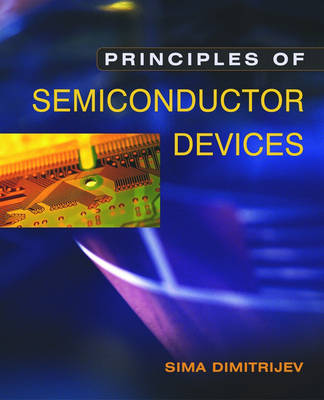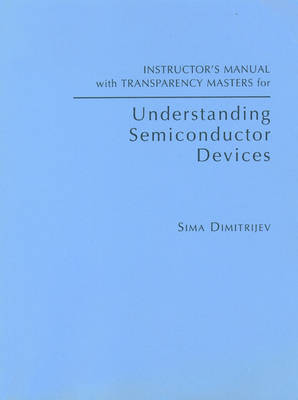The Oxford Series in Electrical and Computer Engineering
2 total works
Quantum mechanical phenomena - including energy bands, energy gaps, holes, and effective mass - constitute the majority of properties unique to semiconductor materials. Understanding how these properties affect the electrical characteristics of semiconductors, is vital for engineers working with today's nanoscale devices. Designed for upper-level undergraduate and graduate courses, "Principles of Semiconductor Devices" covers the dominant practical applications of semiconductor device theory, and applies quantum mechanical concepts and equations to develop the energy-band model. The text presents quantum mechanics through examples related to the energy-band model, providing students with a deeper understanding of the energy-band diagrams used to explain semiconductor device operation. The semiconductor theory is directly linked to the electronic layout and design of integrated circuits. The author has divided the text into four parts. Part I explains semiconductor physics, and Part II presents the principles of operation and modeling of the fundamental junctions and transistors. Part III discusses the diode, MOSFET, and BJT topics that are needed for circuit design.
Part IV introduces photonic devices, microwave FETs, negative-resistance diodes, and power devices. The chapters and the sections in each chapter are organized hierarchically. Core material is presented first, followed by advanced topics, allowing instructors to select more rigorous, design-related topics as they see fit.
Part IV introduces photonic devices, microwave FETs, negative-resistance diodes, and power devices. The chapters and the sections in each chapter are organized hierarchically. Core material is presented first, followed by advanced topics, allowing instructors to select more rigorous, design-related topics as they see fit.
Instructor's Manual with Transparency Masters for "Understanding Semiconductor Devices"
by Sima Dimitrijev
Published August 2000
This manual contains two parts. Part one is complete solutions for the text problems. Part two contains answers to the text review questions. It is a main text for the senior/graduate level course taught in many departments of electrical engineering.

